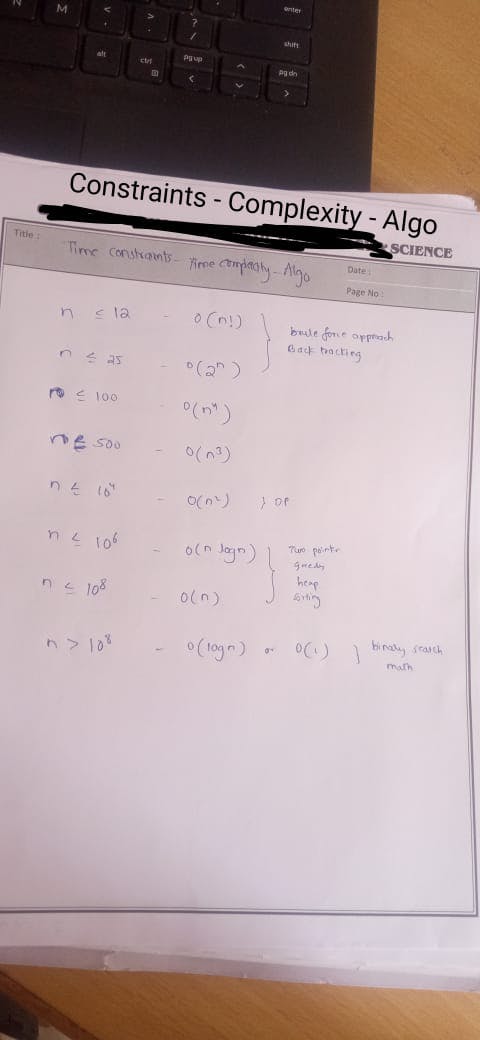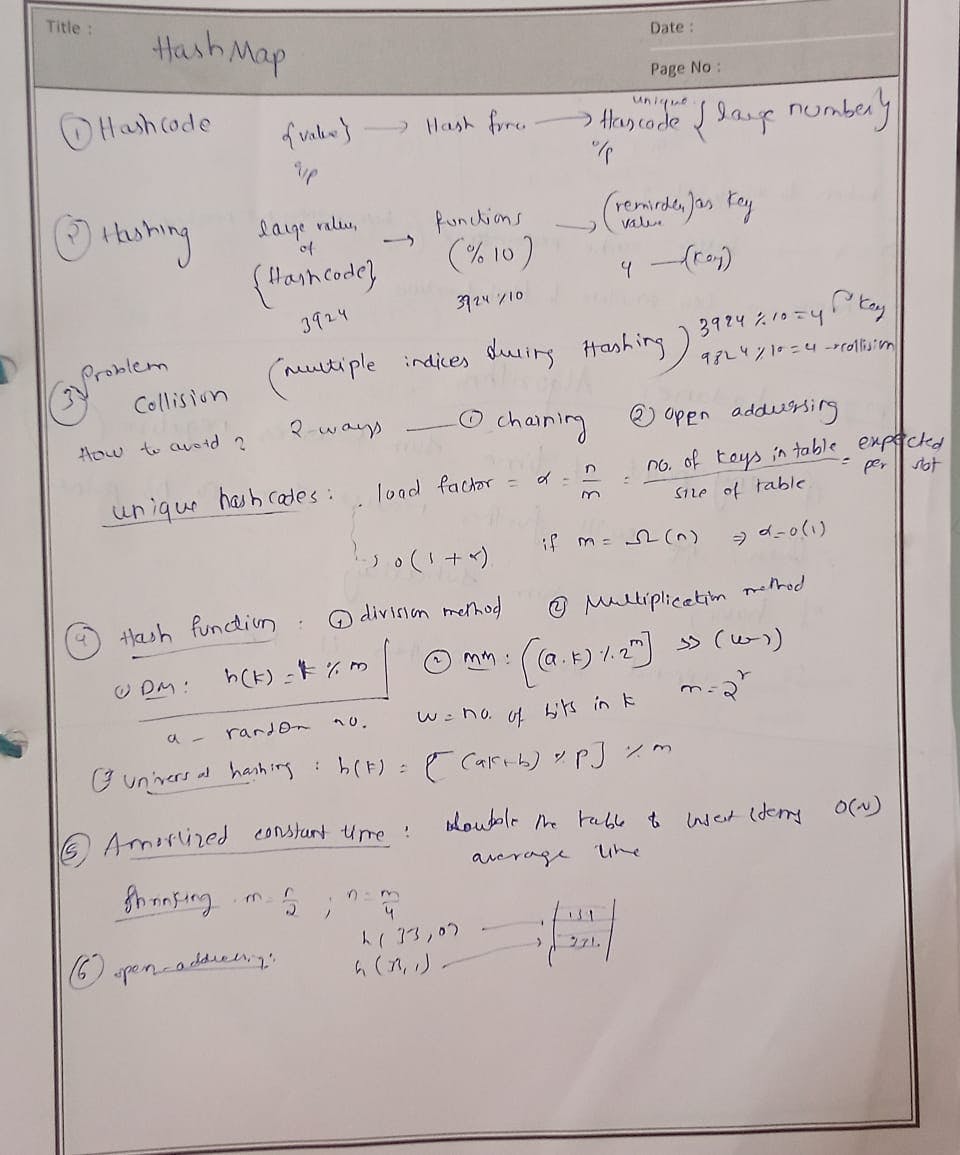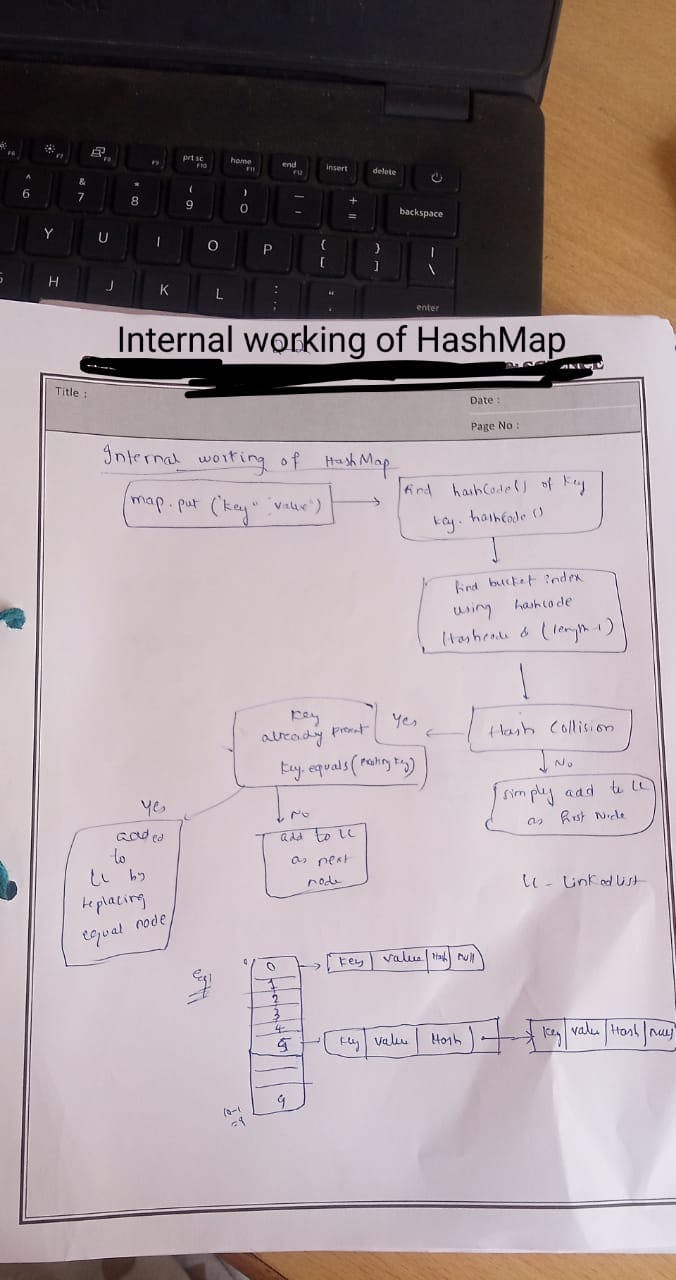PermalinkDay 2: Quick Analysis of Time Complexity and Time constraints, Hashing in JAVA
The following image shows about the prediction of the Algorithms can be used based on the Time Constraints and that Mapping with the Time Complexity Analysis too. Hence, This a guided way of coding and the main important role comes with the Logic presentation on paper as the whole story of solving a problem,
up to 60% depends on the Logic building,
20% on the syntax and code written
other 20% is on the Test cases.

Hence then, I headed out to solve some basic Loops Time Complexity Calculations. They are:

To have a back memory of the process of solving I added the following too.


That's all for the Day.
Self-Complementing me to doing them and also taunting to improve the speed of Learning.
PermalinkHashing Techniques and methods Review in JAVA
Here I mentioned about:
Hashcode importance and Generation
Hashing Technique
Collisions - Occurance, Problem & Solution
Solution Types:
Chaining - used for better Cache Performances
Open Addressing - Less sensitive to Hash Functions
Hash Function
Probing Stratergies:
Linear Probing: h(k,i) = ( h(k) + i ) % m
Double Hashing: h(k,i) = ( h1(k) + h2(k) ) % m

PermalinkInternal Working of HashMaps:

PermalinkKadane's Algorithm:( used for subArray )
If at any point of time sum becomes negative(<0) then it will further reduce sum, so no point of having max_sum subArray. So, append sum as '0' then it is called "Kadane's Algorithm".
source: My Short Notes :)
